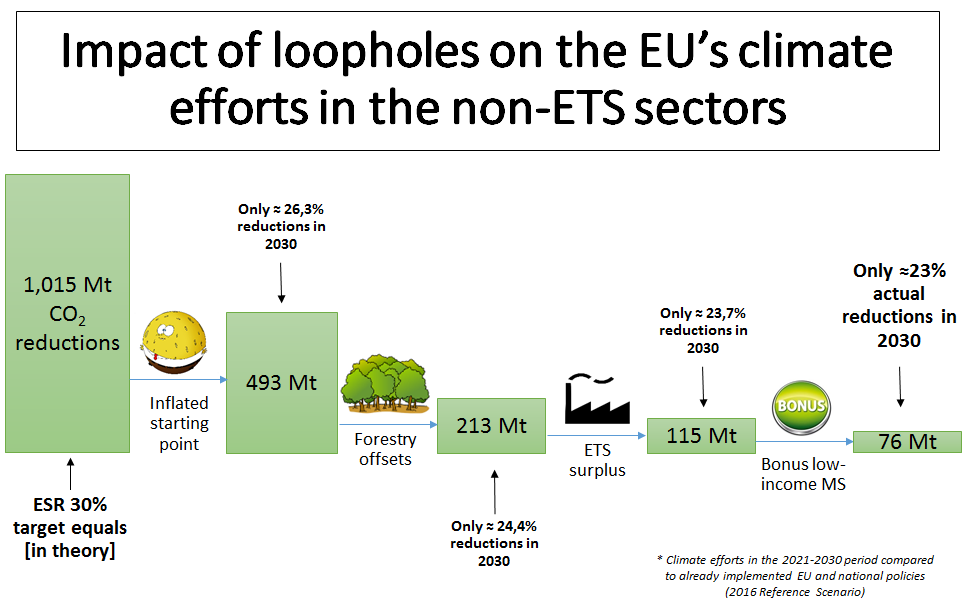Will the EU’s key climate law deliver on its low-carbon promise?
The EU Member States and the European Parliament have begun to work on a major piece of EU climate legislation that covers 60% of the bloc’s greenhouse gas emissions. Carbon Market Watch has analysed the Commission’s proposal and suggests ways to improve it.
In summer 2016, the European Commission presented a legislative proposal for the Effort Sharing Regulation (ESR) for the 2021-2030 period. The ESR sets binding national emission reduction targets for the EU Member States for sectors that are not covered by the EU Emissions Trading System (EU ETS). These include the transport, buildings, agriculture and waste sectors.
Covering 60% of the EU’s total greenhouse gas emissions, it is a centerpiece of Europe’s efforts to implement the goals of the landmark Paris climate change agreement. If designed correctly, the ESR can help secure a climate friendly transformation of our society and lead to more livable cities, cleaner air, reduced energy poverty and the creation of sustainable jobs.
These benefits will result from implementing the EU and national policies needed to meet the targets set by the ESR.
Need for an upward revision of target to match Paris ambition
The Effort Sharing Regulation has a lot of potential to deliver tangible benefits while helping the EU in meeting its international and long term climate commitments. However, the current 2030 target of reducing emissions by 30% in the ESR sectors is too low to keep global warming in check. The target should be increased to at least 45% emission reductions to fully exploit the cost-effective potential and drive actual emission reductions.
Moreover, certain loopholes in the law would mean that in reality emissions could fall by much less than the 30% by 2030, potentially only by 23%.
Flexibilities versus loopholes
The ESR offers different flexibilities and trading options to make it less costly to comply with the targets. Flexibilities amount to loopholes when they stall the low-carbon transition of the non-ETS sectors.

Under the proposed law, countries would be allowed to use a limited number of forestry credits or allowances from the EU ETS to offset emissions in the ESR sectors. In addition to putting the environmental integrity of the proposal in question, these loopholes can lead to delays in the climate friendly transition of the European economy.
Furthermore, the current starting point of the ESR poses a problem for the climate as it does not accurately reflect the actual 2020 emissions. Instead, it rewards countries that fail to meet their 2020 target, leading to more greenhouse gases being emitted between 2021 and 2030.
Member states free to decide on details
While the ESR sets an overall greenhouse gas reduction target for the sectors it covers, it does not specify where, how and with what policies a country should reduce its emissions.
The choice of measures is therefore the responsibility of each Member State, although existing and new EU policies help Member States achieve their targets.
More can be learned from Carbon Market Watch’s latest ESR policy brief here.
By Kaisa Amaral






